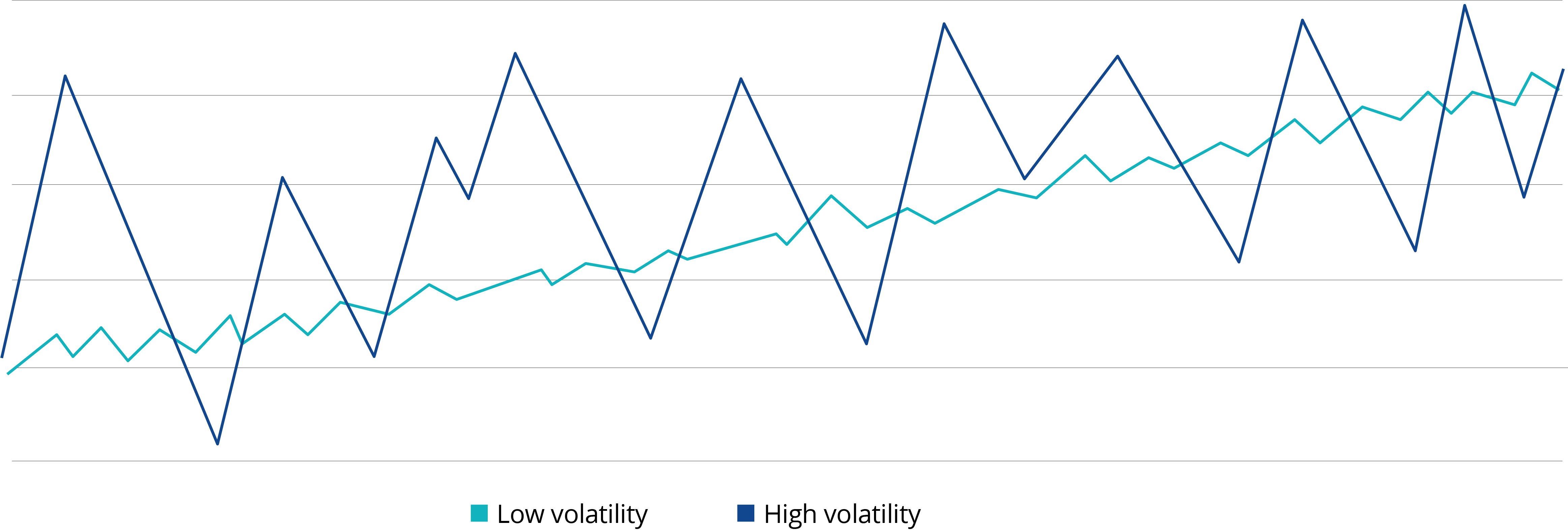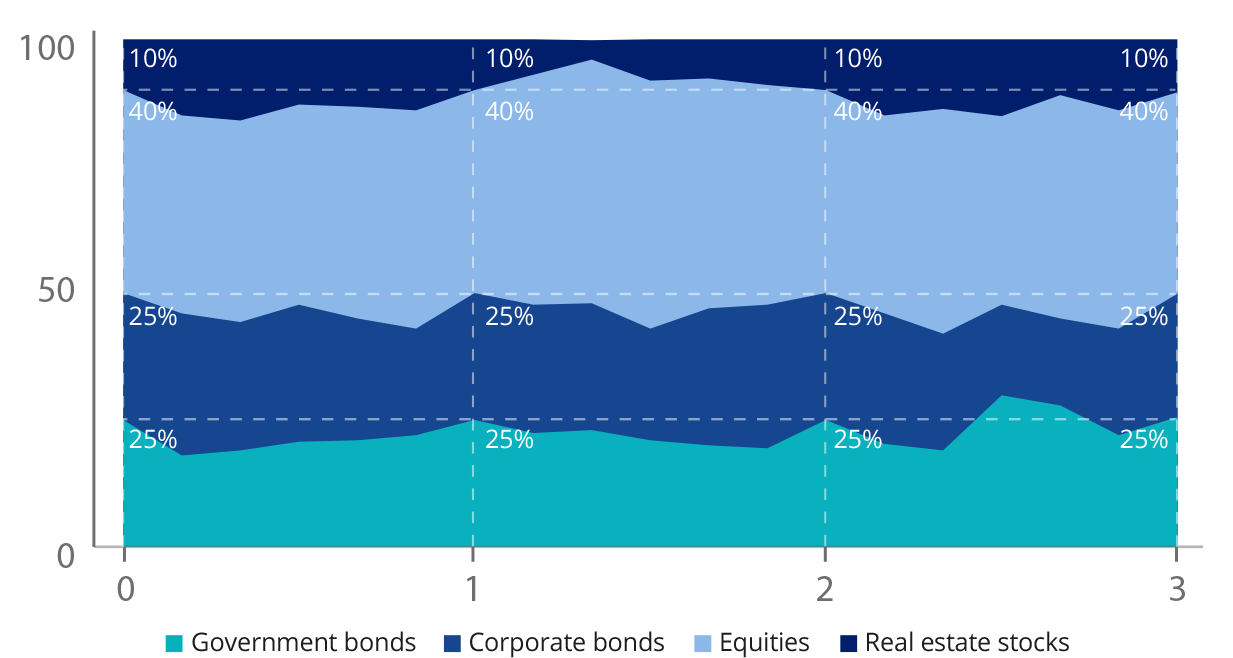Multi-Asset ETFs in Three Flavors
VanEck offers three Multi-Asset ETF variants, with investors having the chance to choose among different risk profiles. They represent a way to gain access, with one single purchase, to equities, corporate and government bonds as well as listed real estate.

- 35% Government bonds
- 35% Corporate bonds
- 25% Global equities
- 5% Real estate stocks
ETF Details
ETF Details
Basis-Ticker: DTMISIN: NL0009272764
TER: 0.28%
AUM: €20.3 M (as of 26-07-2024)
SFDR Classification: Article 8
Lower risk
Higher risk
Typically lower reward
Typically higher reward

- 25% Government bonds
- 25% Corporate bonds
- 40% Global equities
- 10% Real estate stocks
ETF Details
ETF Details
Basis-Ticker: NTMISIN: NL0009272772
TER: 0.30%
AUM: €36.7 M (as of 26-07-2024)
SFDR Classification: Article 8
Lower risk
Higher risk
Typically lower reward
Typically higher reward

- 15% Government bonds
- 15% Corporate bonds
- 60% Global equities
- 10% Real estate stocks
ETF Details
ETF Details
Basis-Ticker: TOFISIN: NL0009272780
TER: 0.32%
AUM: €26.0 M (as of 26-07-2024)
SFDR Classification: Article 8
Lower risk
Higher risk
Typically lower reward
Typically higher reward






